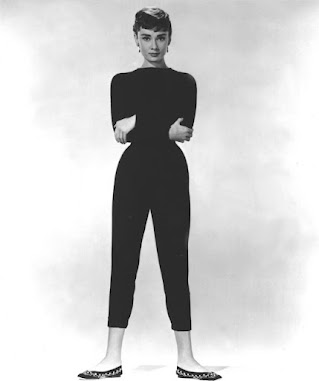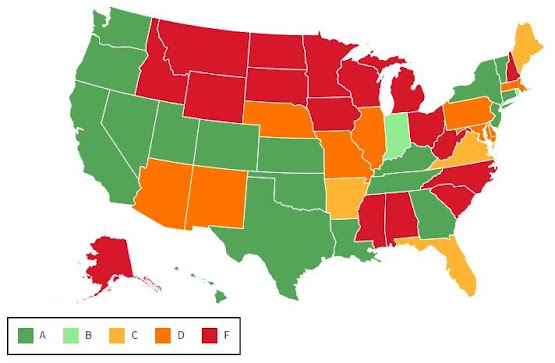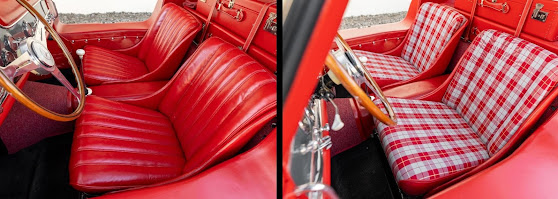Button (pronounced buht-n)
(1) A small disk, knob, or the like for sewing or
otherwise attaching to an article, as of clothing, serving as a fastening when
passed through a buttonhole or loop.
(2) Anything resembling a button, especially in
being small and round, as any of various candies, ornaments, tags,
identification badges, reflectors, markers, etc.
(3) A badge or emblem bearing a name, slogan,
identifying figure, etc., for wear on the lapel, dress, etc.
(4) Any small knob or disk pressed to activate an
electric circuit, release a spring, or otherwise operate or open a machine,
small door, toy, etc.
(5) In botany, a bud or other protuberant part of
a plant.
(6) In mycology, a young or undeveloped mushroom
or any protuberant part of a fungus.
(7) In zoological anatomy, any of various small
parts or structures resembling a button, as the rattle at the tip of the tail
in a very young rattlesnake.
(8) In boxing slang, the point of the chin.
(9) In architecture, a fastener for a door,
window, etc., having two arms and rotating on a pivot that is attached to the
frame (also called turn button).
(10) In metallurgy, when assaying, the small
globule or lump of metal at the bottom of a crucible after fusion.
(11) In fencing, the protective, blunting knob
fixed to the point of a foil.
(12) In horology, alternative name for the crown,
by which watch is wound.
(13) In the graphical user interface of computers
and related devices, a small, button-shaped or clearly defined area that the
user can click on or touch to choose an option.
(14) Slang term for the peyote cactus.
(15) A small gathering of people about two-thirds
of the drinks are spiked with LSD. Those
who drink the un-spiked are the buttons responsible for babysitting the
trippers (1960s west coast US use, now extinct).
(16) A series of nuts & bolts holding
together a three-piece wheel. Such
wheels are very expensive because of the forging process and the ability to
stagger offsets to create large lips.
(17) In boiler-making, the piece of a weld that
pulls out during the destructive testing of spot welds
(18) In rowing, a projection around the loom of
an oar that prevents it slipping through the rowlock.
(19) South African slang for methaqualone tablet.
(20) A unit of length equal to one twelfth of an inch
(British, archaic).
(21) Among luthiers, in the violin-family
instrument, the near semi-circular shape extending from the top of the back
plate of the instrument, meeting the heel of the neck.
(22) In the plural (as buttons), a popular nickname for young ladies, whose ability to
keep shirt buttons buttoned is in inverse proportion to the quantity of strong drink
taken.
1275-1325: From the Middle English boto(u)n (knob or ball attached to another body (especially as used to hold together different parts of a garment by being passed through a slit or loop)), from the Anglo-French, from the Old & Middle French boton (button (originally, a bud)), from bouter & boter (to thrust, butt, strike, push) from the Proto-Germanic buttan, from the primitive Indo-European root bhau- (to strike); the button thus, etymologically, is something that pushes up, or thrusts out. Records exist of the surname Botouner (button-maker) as early as the mid-thirteenth century (and the Modern French noun bouton (button) actually dates from the twelfth century). It was cognate with the Spanish boton and the Italian bottone. The pugilistic slang (point of the chin) was first noted in 1921. First use of button as something pushed to create an effect by opening or closing an electrical circuit is attested from 1840s and the use in metallurgy and welding is based by analogy on descriptions of mushrooms. The verb button emerged in the late fourteenth century in the sense of "to furnish with buttons" which by the early 1600s had extended (when speaking of garments) to "to fasten with buttons". The button-down shirt collar was first advertised in 1916.
New uses continue to emerge as technology evolves: The phrase button-pusher to describe someone "deliberately annoying or provocative" was first recorded in the 1970s and hot-button issue appeared in political science journals as early as 1954, apparently a derivation of the brief use in the press of big red-button and hot-button to (somewhat erroneously) describe the mechanics of launching a nuclear attack. Hot button issues can be useful for political parties to exploit but what the button triggers can shift with generational change: As late as the 1990s the Republican Party in the US used "gay marriage" as a hot button issue to mobilize their base but within 25 years the electoral universe had shifted and the issue no longer had the same traction; there had been generational change. In the 1980s, the now mostly extinct button-pusher had been co-opted as a somewhat condescending description of photographers both by journalists and snobby art critics, the former suggesting some lack of affinity with words, the latter, an absence of artistic skill.
In cars, as in aircraft, the shifting of controls for core and ancillary systems from individual buttons and switches to combined or multi-function controllers began to accelerate during the 1960s, a reaction to the increasing number of electrically activated functions being installed to the point where, if left individualised, in some of the more electronic vehicles, space for all the buttons would have been marginal and ergonomics worse even than it was. Some very clever designs of multi-function controllers did appear but in the twenty-first century, by the time LED flat-screen technology had become elsewhere ubiquitous, it became possible to integrate entire system control environments into a single screen which, able to display either one or a combination of several sub-systems at a time, meant space became effectively unlimited, arrays of virtual buttons and switches available in layers. That didn't mean thing became easier or more convenient to use but production costs were lower. Of late, in response to consumer pressure, some manufacturers have admitted the approach went to far and what might be appropriate for someone sitting at their desk using a desktop PC (and the only way things can be done on a phone), might not be a good idea when driving a car at speed, in traffic. Thus, for core critical functions (ie those drivers most often perform) such as adjusting settings on entertainment and HVAC (heating, ventilation & air conditioning) systems, buttons are making a welcome comeback.
For those who can remember the ways things used to be done: 1965 Jaguar Mark X 4.2 with burl walnut & red leather. Jaguar's cockpits in the 1960s were among the most atmospheric of the era although, even at the time, the less than ideal ergonomics attracted criticism. Something has been lost with the decline of the sensual, tactile, analogue world of buttons.
There were buttons and there were switches. Jaguar used toggle switches until US safety regulations in 1967 compelled a change to rocker switches with softer edges and less forward projection, similar concerns resulting in the top section of the dashboard gaining a padded vinyl covering. Indeed, at the time, there was in the UK and Europe a suspicion US regulators might ban the use of decorative timber in car interiors and the models Mercedes-Benz released in 1971 & 1972 had none but the austerity didn't last, the veneers soon restored. The functionality of the rocker switches was exactly the same as that of the toggles and they were certainly less prone to damage but for some the tactile experience was lacking, the ASMR less satisfying. ASMR (Autonomous Sensory Meridian Response) describes the physical & psychological pleasure derived from specific stimuli (usually a sound). A highly segmented market, among the aficionadi there are niches as varied as those who relish the clicking of an IBM Seletric typewriter or Model M keyboard, the sight & sound of South Korean girls on TikTok eating noodles, the mechanical precision of the fore-end slide of pump-action shotgun being operated or the flicking toggle switches.
1992 600 SEC (Not sold in North America)
1993 600 SEC (Global)
1994-1995 S 600 (Global)
1996-1997 S 600 (North America) & CL 600 (RoW (rest of the world))
1998 CL 600 (Global)
The literal (physical) button-hole was noted in
tailoring first during the 1560s, the figurative sense "to detain
(someone) unwillingly in conversation” dating from 1862, a variation of the
earlier button-hold (1834) and button-holder (1806), all based on the image is
of holding someone by the coat-button so as to detain them. The adjectival push-button ("characterized
by the use of push-buttons) emerged in 1945 as a consequence of the increasingly
electronic military systems then in wide deployment. The earlier form “push-buttons" was from
1903, a modification of the noun push-button (button pressed with the finger to
effect some operation) from 1865, then applied to mechanical devices. The earlier adjectival form was “press-button”
(1892) derived from the noun (1879). For
no apparent reason, it was the earlier “press of a button” which tended in the
1950s & 1960s to be preferred to “push of a button” to express the concern
felt at the ease with which the US and USSR could trigger global thermo-nuclear
war although “flick of a switch” also achieved much currency. None were exactly usefully descriptive of a
complex chain of events but it’s true in a nuclear launch, many buttons and
switches still are involved.
No fear of button theory: Button theory suggests buttons can be done-up or undone. Noted empiricist Lindsay Lohan has for some years been undertaking a longitudinal study to test theory.
The fear
of buttons is koumpounophobia, the construct being the Modern Greek κουμπί
(koumpí) + -phobia and
the word, like many describing phobias is a neologism. Koumpi was from the Ancient Greek κομβίον
(kombíon) translates as button in its two literal senses (a fastener for
clothing or a device for instrument or remote mechanical control). A button in Greek is thus κουμπί (koumpí) (the
plural κουμπιά) and the verb is κουμπώνω (koumpóno). In the Ancient Greek the lexemic unit koump- didn’t
exist although it did have κομβίον (kombíon (which exists in Modern Greek as komvíon))
which meant buckle. It may seem as strange
omission because Ancient Greek had κουμπούνω, (koumpouno) which meant “to
button” but the root was κύαμος (komos or koumos) meaning “broad
bean” and, because there were no buttons in the Greece of Antiquity, they used
appropriately sized & shaped beans as clothes fasteners. The construct of koumpouno (to button) koum(os)
+ + πονέω (poneo) (to work; to exert), the
idea of a bean which is used again and again.
The suffix -phobia (fear of a specific thing; hate, dislike, or
repression of a specific thing) was from the New Latin, from the Classical
Latin, from the Ancient Greek -φοβία (-phobía)
and was used to form nouns meaning fear of a specific thing (the idea of a
hatred came later). In medicine, the absence of the belly button is a rare congenital defect, the medical term for which is omphalocele, usually something ultimately of no physiological significance but because it can cause psychological distress, plastic surgeons can re-construct one, a relatively simple procedure. The alternative for an omphalocelic is to shun omphalophiliacs and hook up with someone who suffers omphalophobia (fear of the belly button); they should live happily ever after. The phobia koumpounophobia is unrelated and references only the manufactured objects.
So,
in the narrow technical sense, an etymologist might insist koumpounophobia is
the fear of clothing fasteners rather than buttons of all types but that seems not
helpful and it’s regarded as a generalised aversion and one said sometimes
associated with kyklophobia (the fear of circles or other round objects) and
especially the surprisingly common trypophobia (fear of holes (particularly if
clustered or in some way arranged in a pattern)). Estimates of the prevalence
of the condition have been given by some but these are unverified and it’s not
clear if those who for whatever reason prefer zips, Velcro or some other
fastener are included and with phobias, numbers really should include only
those where the aversion has some significant impact on life. The symptoms suffered can include (1) an
inability to tolerate the sight, sound, or texture of buttons, (2) feelings of
panic, dread, or terror when seeing or thinking about buttons, (3) an acknowledgment
that the fear is either wholly irrational or disproportionate to the potential danger. Koumpounophobia reactions are usually
automatic & uncontrollable and the source may be unknown or experiential
(exposure to some disturbing imagery or description of buttons or an actual
event involving buttons such as swallowing one when a child). Like many phobias, the physical reactions can
include a rapid heartbeat, shortness of breath, trembling, excessive sweating,
nausea, dry mouth, inability to speak or think clearly, tightening of stomach
muscles, and an overwhelming desire to escape from button-related situations. All are likely to involve an anxiety attack to
some extent and the recommended treatment is the staggered exposure therapy used
for many phobias; the patient slowly learning to wear, use and live with
buttons; antidepressants, tranquillisers & beta-blockers are now considered
medications of last resort.
What is sometimes treated as koumpounophobia can be a manifestation of a different phobia. In the literature there are examples of buttons triggering anxiety when touched or viewed but the reaction was actually to texture, color or a resemblance to something (typically a face, mouth or teeth). The button is thus incidental to the reaction in the same way that those with mysophobia (in popular use the germophobic) may react to buttons because of the association with uncleanliness. One documented aspect of obsessive compulsive disorder (OCD) is that many sufferers immediately wash their hands after touching a button; the increased prevalence of this behaviour during the COVID-19 pandemic in relation to buttons touched by other (keyboards, elevators etc) is not thought indicative of a phobia but would be if it manifests as life-long behaviour.
Apple Magic Mouse, Multi-Touch Surface in white @ US$99.00 (left), Logitech Signature M650 L Full-size Wireless two-button Scroll Mouse with Silent Clicks in blue @ US$37.99 (centre) and Steve Jobs' vision of hell: Canon 5565B001 X Mark I Slim 3-in-1 wireless mouse with keypad calculator @ US$49.95.
Steve
Jobs (1955-2011; sometime co-founder, chairman & CEO of Apple) was said to
have an aversion to buttons, something linked to his fondness for button-free
turtleneck clothing but given he spent decades using keyboards without apparent
ill-effect, it’s doubtful a clinician would diagnose koumpounophobia and it's more likely he was just convinced of the technological advantages of going
button-less. Without buttons,
manufacturing processes would be cheaper, water-proofing devices like iPhones would become (at least
theoretically) possible and upgrades would no longer be constrained by static buttons,
the user interface wholly virtualized on one flat panel, able to be upgraded purely in software. It apparently started with the button-less
Apple mouse, the industry legend being Mr Jobs saw a prototype (which the
designers regarded as nothing more than speculative) and insisted it become
Apple’s standard device. Whether or not
it happened that way, the story is illustrative of the way business was done at
Apple and it’s notable his veto on offering a stylus with which to interact
with apps or the operating system didn’t survive his death. His response to the idea of a stylus was
reportedly “yuk” and he seems to have decided all his users would think the
same way and probably he was right, Apple’s users tending always to do what Apple
tells them to do. However, for those who
find the sleek Apple mouse better to behold than use, third-party products with
buttons and scroll wheels are available, sometimes for half the cost of the
genuine article. Since the death of Mr Jobs, Apple has relented on the "stylus question".
Shiny on the outside: Finished in Bianco Avus over black leather with Rosso Corsa (racing red) instruments, of the 400 Ferrai Enzos (2002-2004) chassis 133023 (2003) was the only one the factory painted white. Some Ferraris really suit white, notably the elegant 365 GT4 2+2 and the successor 400 and 412 models (1972-1989).
The dreaded “Ferrari sticky buttons” is a well-known phenomenon, the stickiness coming from the rubberized material preferred by the factory because of the superior feel offered. However, under just about any climatic conditions, continuous use will induce a deterioration which resembles melting, "mushiness" the final outcome. The internet is awash with suggestions, the simplest of which involves products like rubbing alcohol (the use of which can cause its own destructiveness) and the consensus seems to be that in many cases only replacement buttons will produce a satisfactory result. The choice is between obtaining the real Ferrari part-number (if available) with the knowledge the problem will re-occur or use third-part replacements which are made of a more durable material, the disadvantage being the feel won’t be quite the same and there’s a reluctance among some to use non-factory parts, an attitude enforced by the "originality police".
Sticky on the inside: Ferrari 485 California F1 gearbox buttons, sticky (left) and not (right).
Ferrari does use the suspect material for a reason and it’s applied to interior components such as trim, bezels, buttons & switches, and heating, ventilation & air-conditioning panels. The coatings are usually referred to as “soft-touch” and designers like them for the soft, velvet-like feel imparted. Used also on computer mice and electronic remote controls, the low gloss sheen is in cars helpful because being absorptive, glare is reduced and Ferrari uses both a clear and black finish. It’s an issue not exclusive to Ferraris although owners of those do seem most concerned and while using rubbing alcohol might sound a tempting Q&D (quick & dirty) fix, for those with sticky buttons this is probably a job best left to experts of which there are now a few who are finding business good.










































